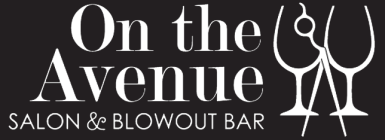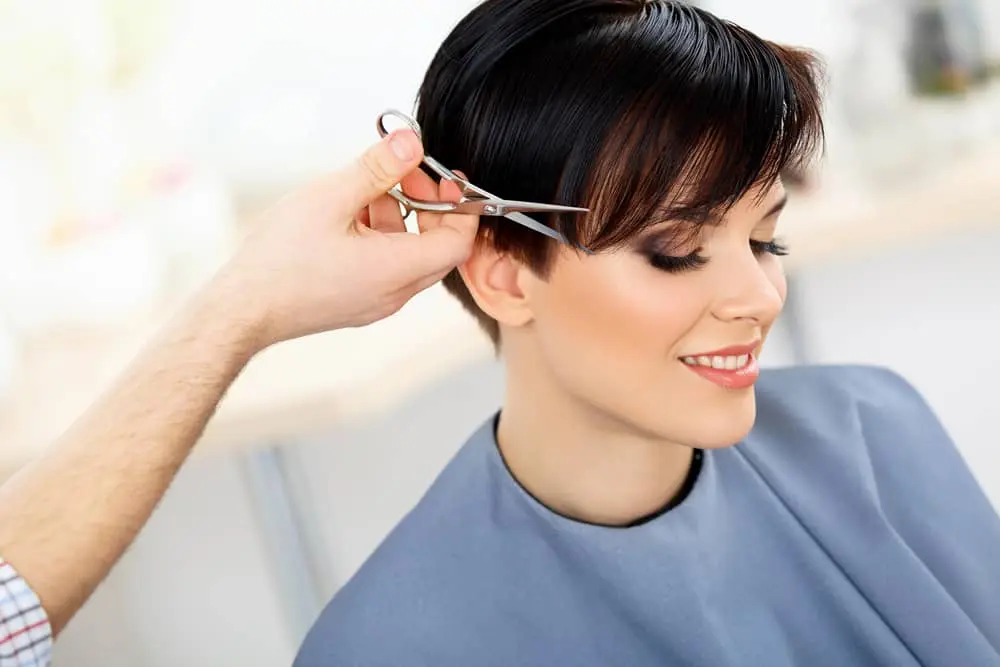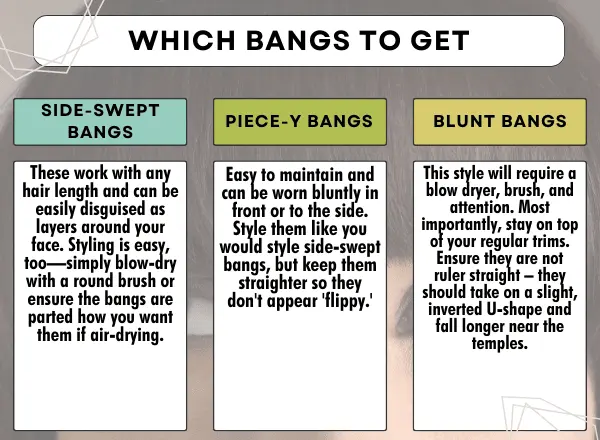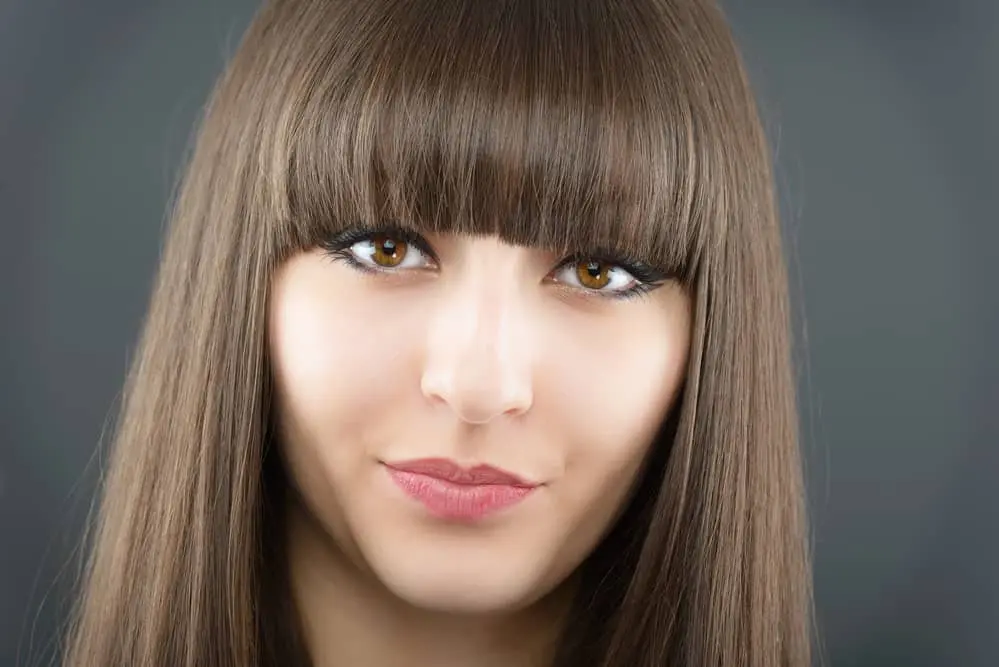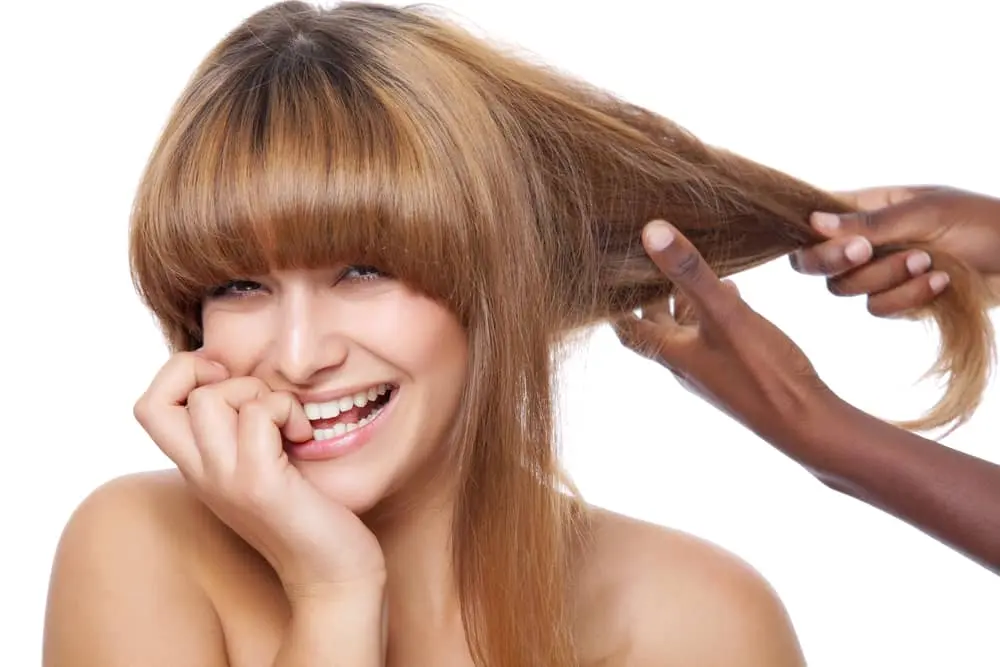The Secret to Stylish Bangs: How Often Do You Need A Bang Trim?
When the seasons change, we all feel like trying out a fresh hairstyle like our favorite celebrities. And, at some point, while you’re scouring Pinterest for a fresh look, you’ve probably asked yourself, “Should I get bangs?” and “How often do you need a bang trim?” But unlike those floral dresses you can easily return, bangs are more of a commitment.
Having bangs can give you a fresh, younger appearance (look at Kerry Washington and Taylor Swift). They’re also suitable for people with curly hair. But though they appear effortless, the build-up could be more breezy. If you’re considering cutting, we’ve gathered everything you need to know before you get bangs, so you have no regret.
Maintenance: How Often Do You Need a Bang Trim?
Before we delve into anything else, let’s talk about maintenance – this is exceptionally important if you do not have bangs but are considering getting them. You must get the full picture of how much effort you put into maintaining your fringes.
At the very least, schedule salon visits every six weeks for a professional bang trim. This might sound like a lot, but your bangs grow out alarmingly fast. Unless you enjoy having your bangs stabbing you in the eyes, regular trims are warranted – some even go for salon trims every one to two weeks.
Above all, do not attempt to cut your bangs on your own. If you need to, avoid kitchen shears or ordinary cutting scissors at all costs – use salon scissors on dry hair, and always take off millimeters at a time because you can always cut more. Instead of cutting in a solid, straight line, twist your bangs, point the scissors upwards, and chip into the ends to get a more natural, imprecise line.
Which Bangs To Get
If the maintenance portion has not already scared you away, it’s time to discuss the type of bangs best for you. If you’re easing into bangs or want the style with the least commitment, side-swept bangs are ideal. These work with any hair length and can be easily disguised as layers around your face. Styling is easy, too—simply blow-dry with a round brush or ensure the bangs are parted how you want them if air-drying.
Piece-y bangs are another style that is easy to maintain and can be worn bluntly in front or to the side. Style them like you would style side-swept bangs, but keep them straighter so they don’t appear ‘flippy.’ For a blunter style, blow-dry with a flat brush.
Now, for the ultimate bangs: blunt bangs. This style will require a blow dryer, brush, and attention. Most importantly, stay on top of your regular trims. Ensure they are not ruler straight – they should take on a slight, inverted U-shape and fall longer near the temples. For the most flattering length, go anywhere between the tops of the brows and the tips of the lashes. Pro tip: keep your bangs flat and in place by sleeping with a silk scarf around your head.
Blow-drying Your Bangs
We’ve mentioned a lot of blow-drying—this is vital for bangs, as blow-drying helps your bangs stay in the desired shape. One important tip to remember is to blow dry ASAP. Do it after you shower when your hair is still wet. Bangs dry fast, and the moment they air-dry, they’ve already started to set into their natural shape, which usually isn’t the most flattering (unless you’re incredibly lucky).
As for the type of brush to use, a small round boar-bristle brush is the ideal brush for styling bangs. The tightly packed bristles grab every hair, giving you the right amount of tension. Pair this with a powerful hair dryer – with the nozzle attached – and you’re all set.
To blow-dry, hold your hair dryer over your head, facing down, and brush your bangs from side to side until dry. This will remove any cowlicks and ensure your bangs fall straight. Finish by rolling the ends under.
Products for Your Bangs
Now, let’s move on to the type of hair products you should use once you have bangs. The golden rule? Less is more. You can stick to the hair products you’ve been using regularly, but apply them to your hair first and only the leftovers to your bangs. Applying any more products to your bangs will make them greasy fast.
You might belong to the 1% that can get away with using nothing on your bangs, but if you’re like the other unfortunate folks, some product is needed to keep the bangs in place. If you have fine hair, a normal styling cream is enough. For thicker or coarser strands, use something with more hold, like a gel or wax.
Also, unlike your hair, which can go a couple of days without washing, bangs need cleaning daily. This is because they get oily very quickly. You can give it a quick shampoo when washing your face in the morning or invest in some dry shampoo. A quick spritz will help absorb excess oil and revive volume so you don’t end up with flat, greasy bangs.
Avoiding Forehead Acne
One downside to getting bangs is that you need to pay special attention to your forehead. If you have a fringe covering your forehead 24/7, it’s bound to be more prone to breakouts. This is especially relevant in Singapore, where the hot and humid weather easily induces sweating.
To prevent pimples and blemishes, wear a headband if you’re doing physical exercises to keep your forehead clear and eliminate excess oil caused by contact with bangs. A soft headband will prevent a bent in the fringe, and you can wet and blow-dry them after the workout.
When you put moisturizer on your forehead, remember not to let it get on your bangs, or they’ll get greasy. Wait until the moisturizer sinks into your skin, which could take around 10 minutes. To be sure, use blotting paper to dab your forehead before letting your bangs down.
Does Trimming Bangs Make It Grow Faster?
When you’re growing short hair, you might feel like cutting your bangs short again. Resist! Doing so sets you back instead of facing the problem. Instead of delaying, confront it as it arises. While it might seem counterproductive, having regular bang trims with your hairstylist will ensure that your bangs stay healthy, suggesting they can absorb more moisture, vitamins, and other goodness to help the hair grow faster. Try having your bangs trimmed every six weeks, as this will also ensure that the bangs grow while they blend into the rest of your hair.
Put on a deep conditioning mask on your hair weekly to moisturize and nourish it. The healthier your hair, the faster it’ll grow, and the faster you can say “Bye, Felicia!” to your awkward bangs.
Do you need a trim to give your bangs a nice boost? Please reach out to us today to set an appointment!
